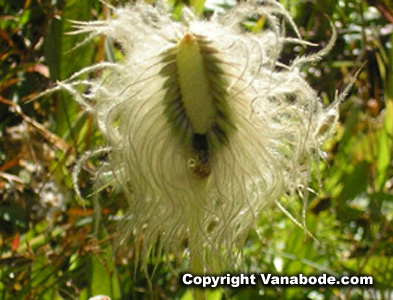
Overview Who Needs This? Excerpts Order Book Pictures Chapters
Answers Reviews Destinations Free Stuff More Contact Us
Glacier National Park Montana
Glacier National Park has hosted us many times over the years, first in a motorhome then our Vanabode but always, every single time, even when there were fires burning up half the park it has still been extraordinary and worth the trip. If you want beautiful Montana mountains and lakes for outdoor activities get here when they are open (only about 3 months a year for most people). Glacier National Park encompasses a relatively large mountainous region of northwestern Montana, bordering southern Alberta and British Columbia, Canada. With over 100,000 acres of forests, alpine meadows, 200 lakes and streams, and 50 active glaciers this diverse habitat is home to over 70 species of mammals and more than 260 species of birds. This park is uncrowded with some of the world's most beautiful scenery.
|
|
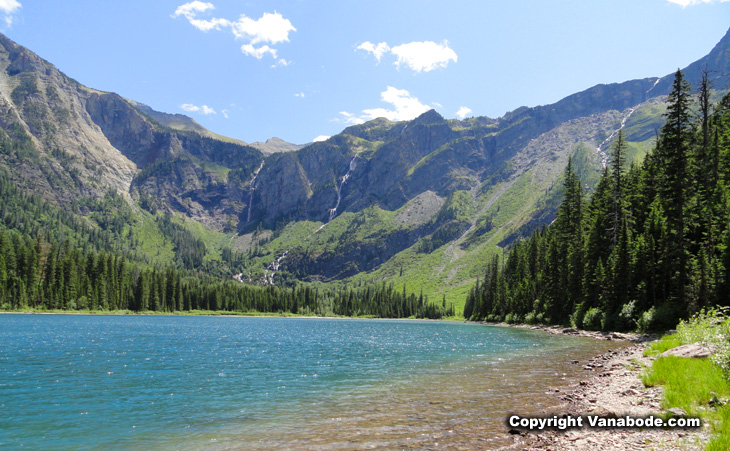
Above and below: Glacier National Park's Avalanche Lake is an astonishing find behind a 2+ mile hike through fairly easy terrain in mostly shady forest. The middle of Glacier was on fire when we were here, so we explored the Northern and Southern areas.
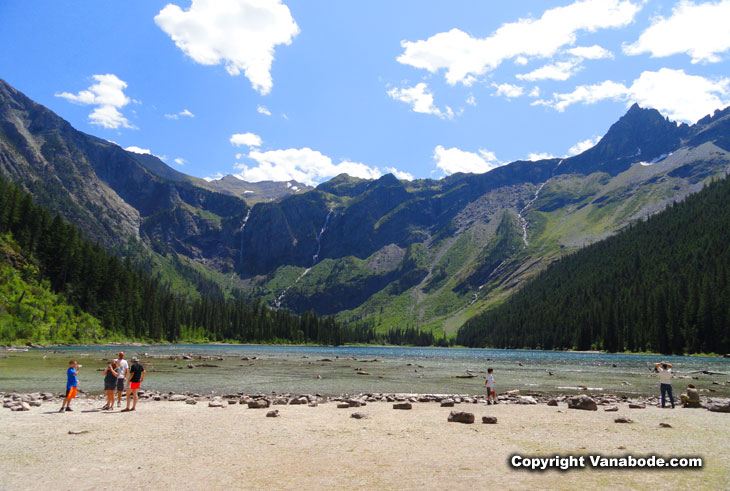
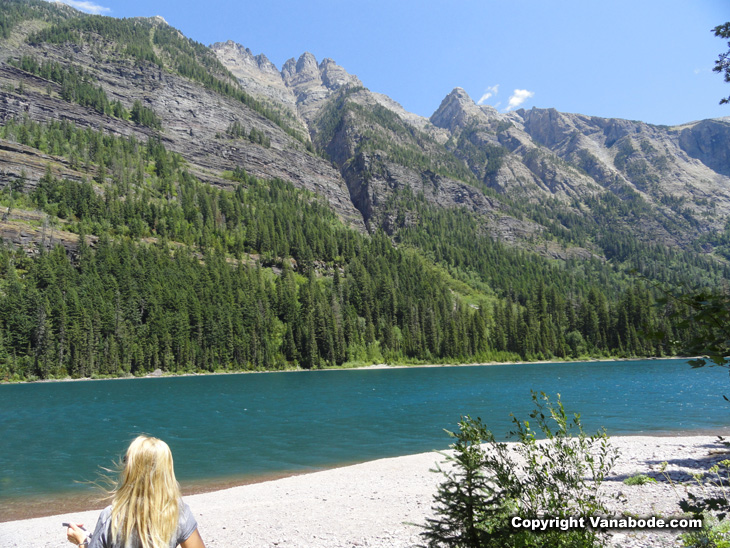
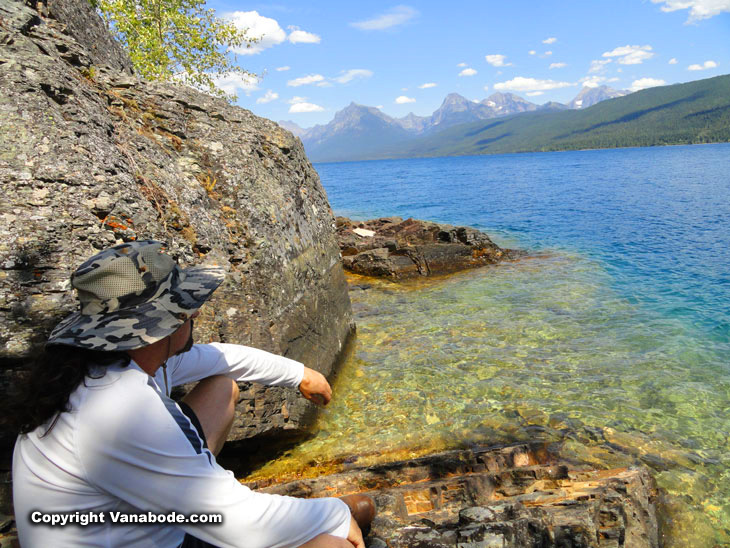
Above: Glacier National Park in the Lake McDonald area shore side. This was the only night we paid to camp while enjoying Glacier for the week (came with the only hot shower in the area).

Above: Even when traveling thousands of miles for months at a time, my children are never far from my mind. I wish they were here with me. The guy on the right was playing this huge custom horn on the shores of the lake in Apgar Village in Glacier as we watched the sun set.
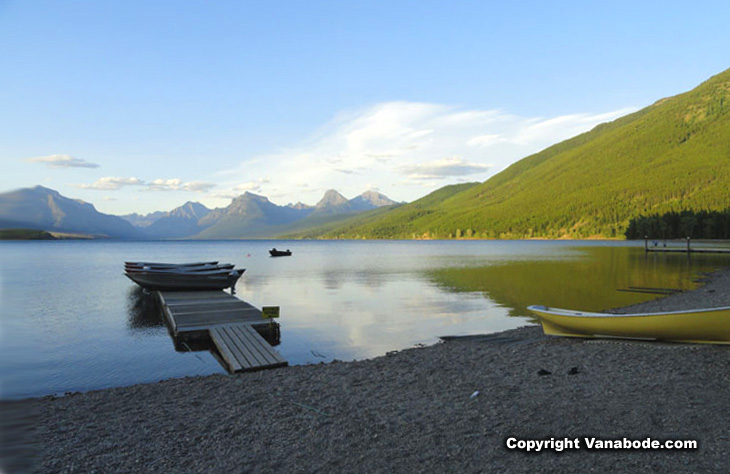
Above: Lakefront during sunset in Apgar Village in Glacier National Park, host to stores, hotels, camping, picnic areas, and limited bathrooms for the public. It's clean, fun, cheap, and easy to Vanabode here.
Glacier National Park is named for the glaciers that produced its landscape. A glacier is a moving mass of snow and ice and forms when more snow falls then melts in the summer. The snow accumulates and presses the layers below it into ice. The bottom layer of ice becomes flexible and allows the glacier to move. As it moves, a glacier picks up rock and gravel. With this mixture of debris, it scours and sculpts the land it moves across. This is how Glacier National Park got its valleys, mountain peaks, and lakes.
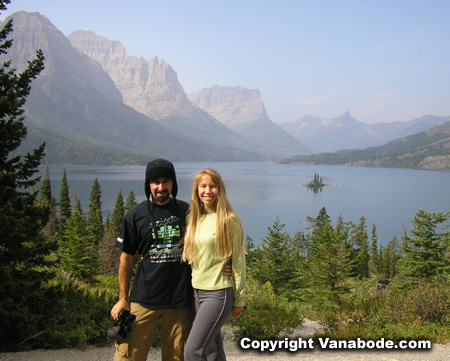
Red vintage sedans called "Jammers" are a symbol of Glacier National Park. The 25-foot-long sedans seat 17 passengers with a unique canvas top, which rolls back allowing passengers to stand and view Glacier National Park unobstructed. The jammer buses serve as Glacier National Park's transportation system, allowing travel from one side of the park to the other along the Going-to-the-Sun Road. Transportation is also offered via a shuttle service to various locations and trailheads along the Going-to-the-Sun Road, as well as to West Glacier, East Glacier, Many Glacier, Two Medicine, Chief Mountain, and Waterton Townsite (in conjunction with a Canadian service).
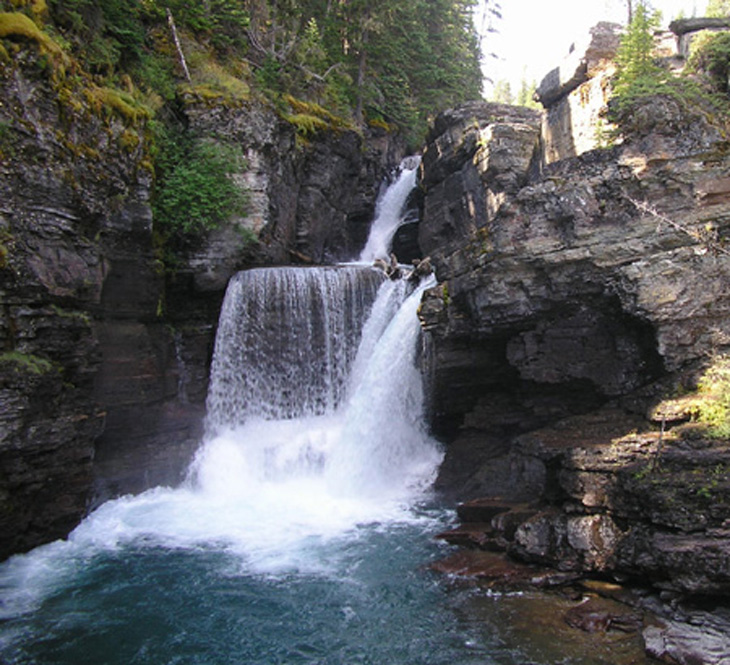
The Going-To-The-Sun Road scenic highway bisects this spectacular park. It is 50 miles long and follows two of the park's largest lakes and cliffs below the Continental Divide. There are numerous pull-offs and wayside exhibits. NOTE: Vehicles longer than 21 feet or wider than 8 feet (including mirrors) are prohibited between Avalanche Creek and Sun Point.
The spectacular landscape is a hikers paradise containing 700 miles of maintained trails that lead deep into one of the largest ecosystems in the continental United States. Day hikes are plentiful in the park. The visitor center provides free maps of popular trails in the park and the bookstores carry a complete line of trail guides to aid the hiker. Hikers are encouraged to experience Glacier National Park at their own pace. Hikers planning overnight trips in Glacier’s backcountry must stop at a visitor center or ranger station and obtain a backcountry permit. Guided day hikes and backpacking trips into Glacier's backcountry are offered from a private company for one to seven days.
There are many tours and activities in and around Glacier National Park such as fishing tours, boat tours, lodge tours, scenic tours, horseback trail rides, guided hiking tours, and white water rafting. Park rangers host naturalist activities and a complete schedule of programs is available at visitor centers and ranger stations throughout the park. Activities include evening slide programs, guided hikes, boat tours, and all day hikes.
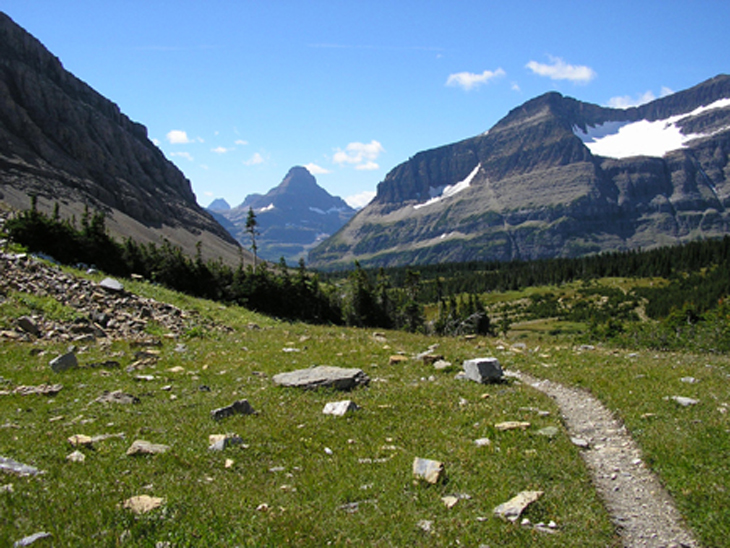
Glacier National Parks 13 campgrounds provide just over 1000 campsites for visitors to enjoy. The lodges and inns located throughout Glacier National Park provide a range of accommodations. Most visitor facilities are open from late May to mid-September. During the winter in-park services are not available.
Travel info - Vehicles longer than 21 feet are prohibited on Going-To-The-Sun Road. Entrance fees: A Glacier National Park Pass is $25.00 for 12 months. Single person entry fee is $10.00 for seven days. Single vehicle entry fee is $20.00 for seven days. Map location of Glacier National Park or visit more Glacier pictures


Home
Contact Us Copyright
© 2007-2016 Free
Guide They Hate Me
Privacy
Policy Terms
and Conditions Media
Press Affiliate
